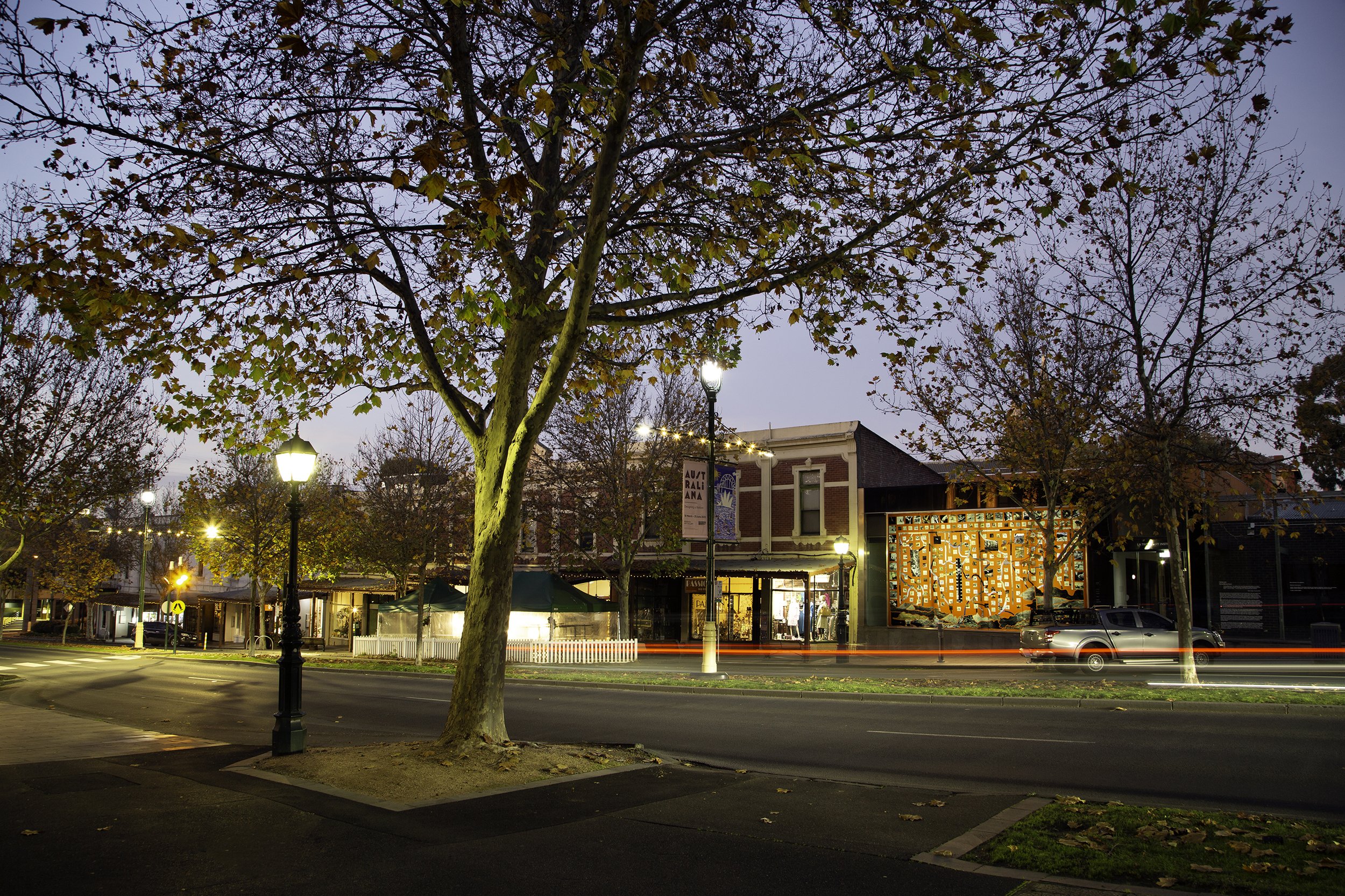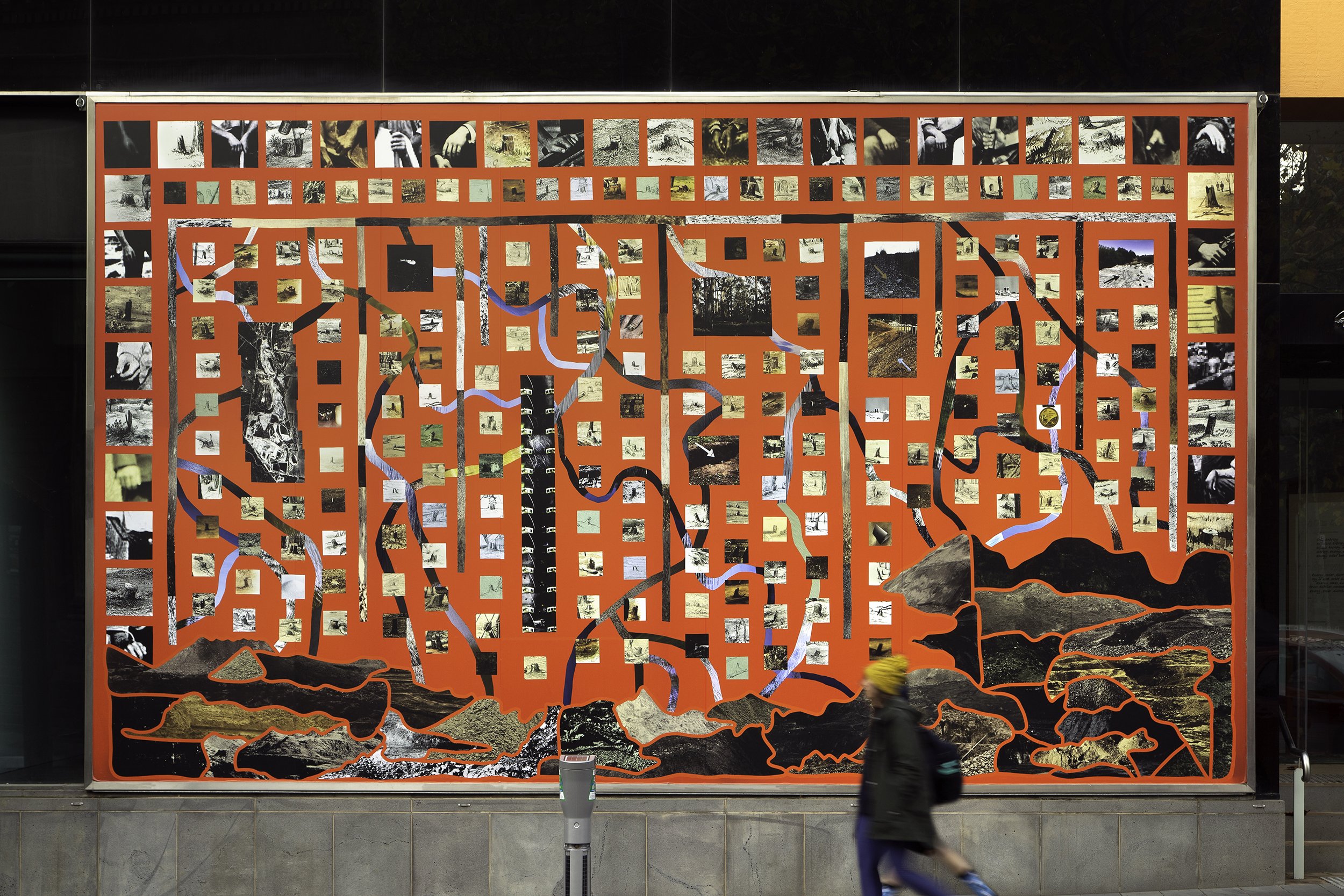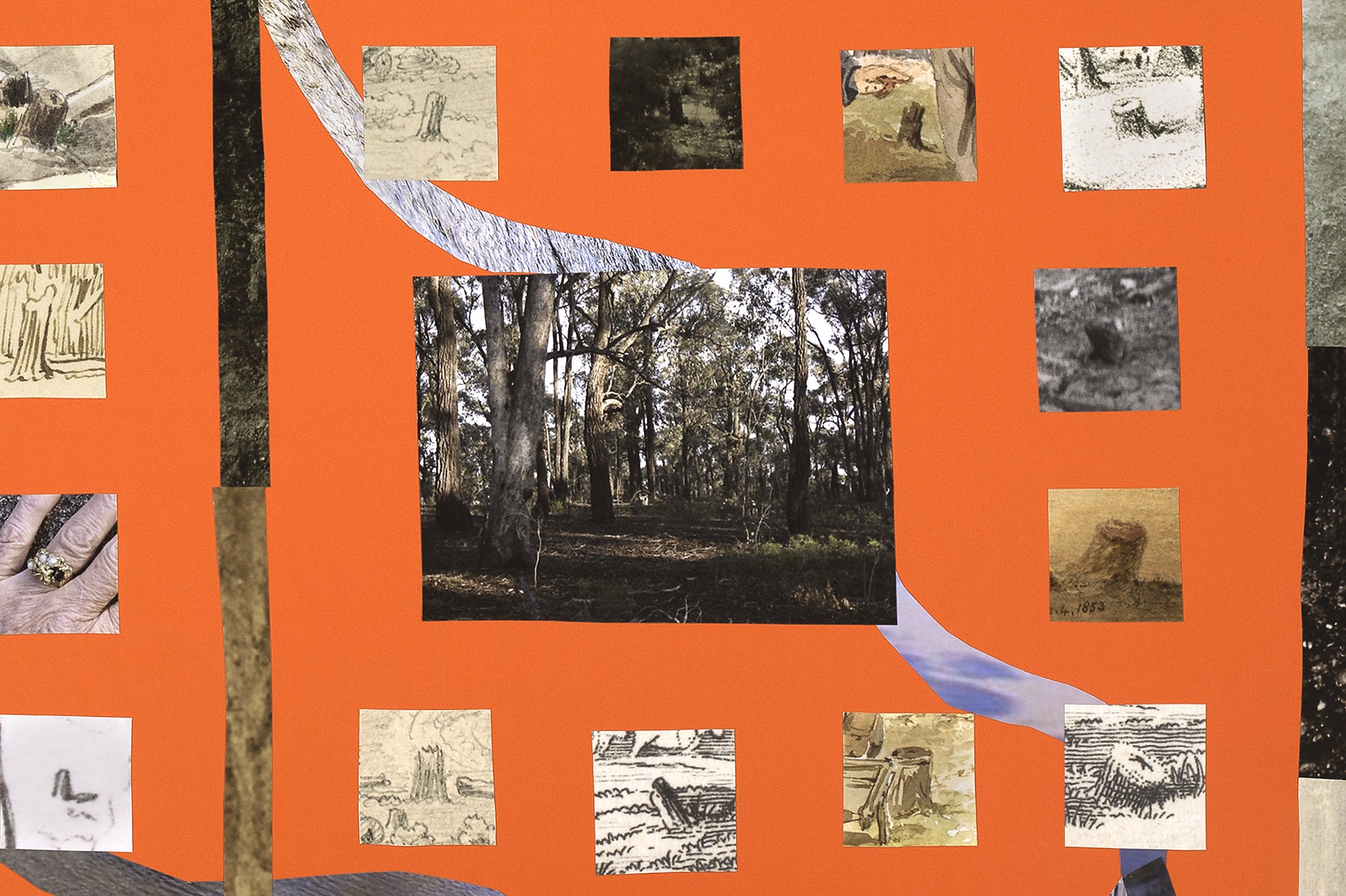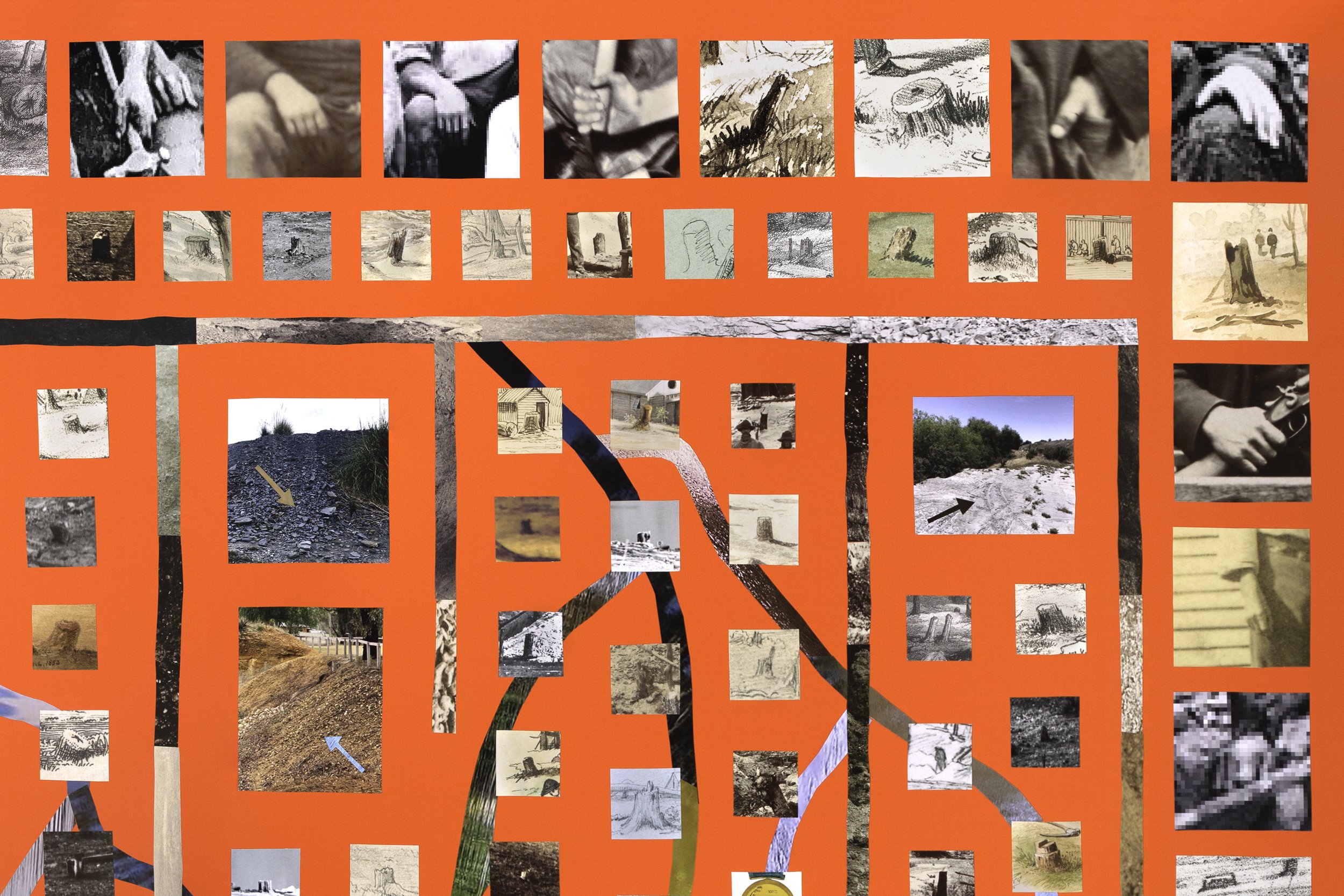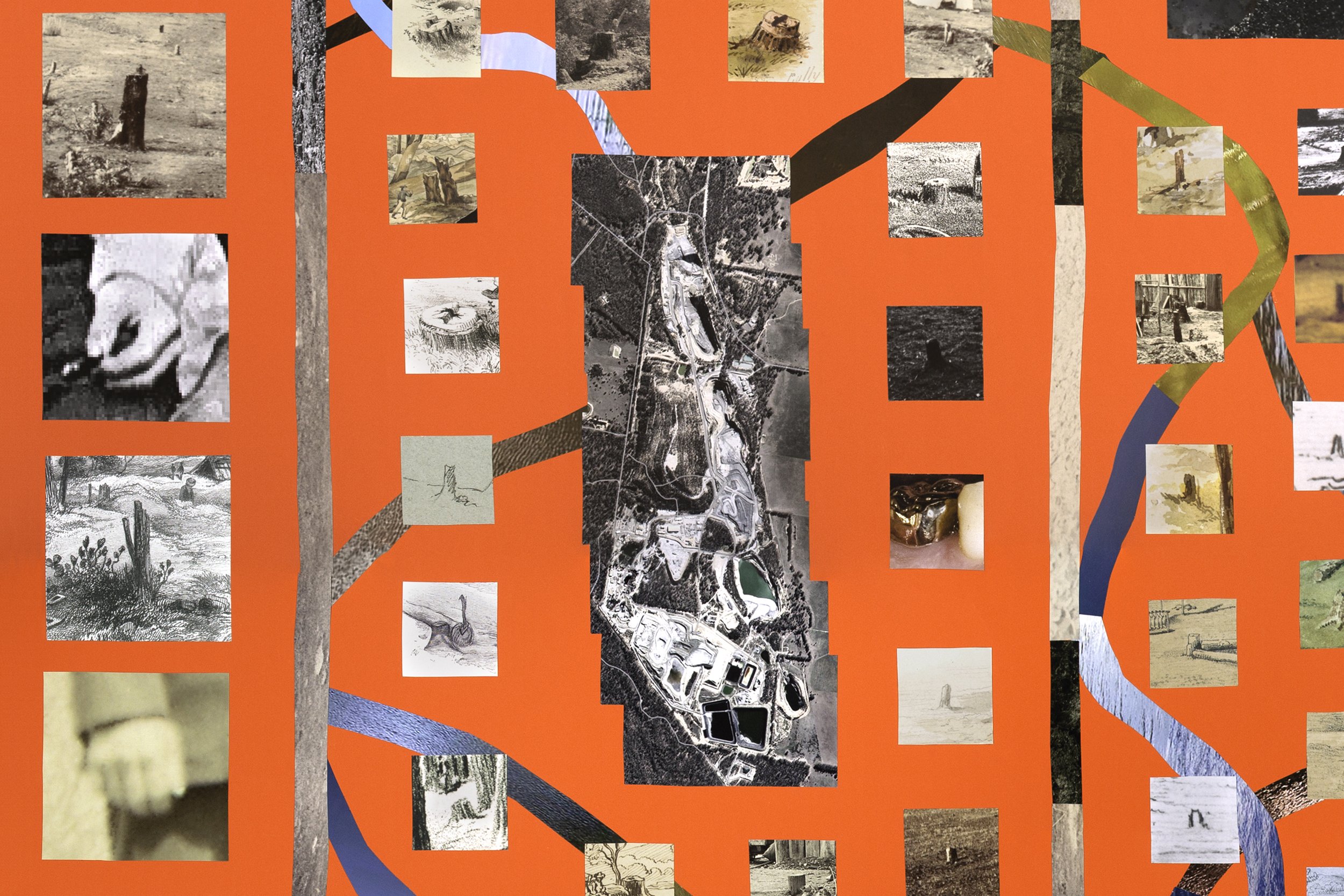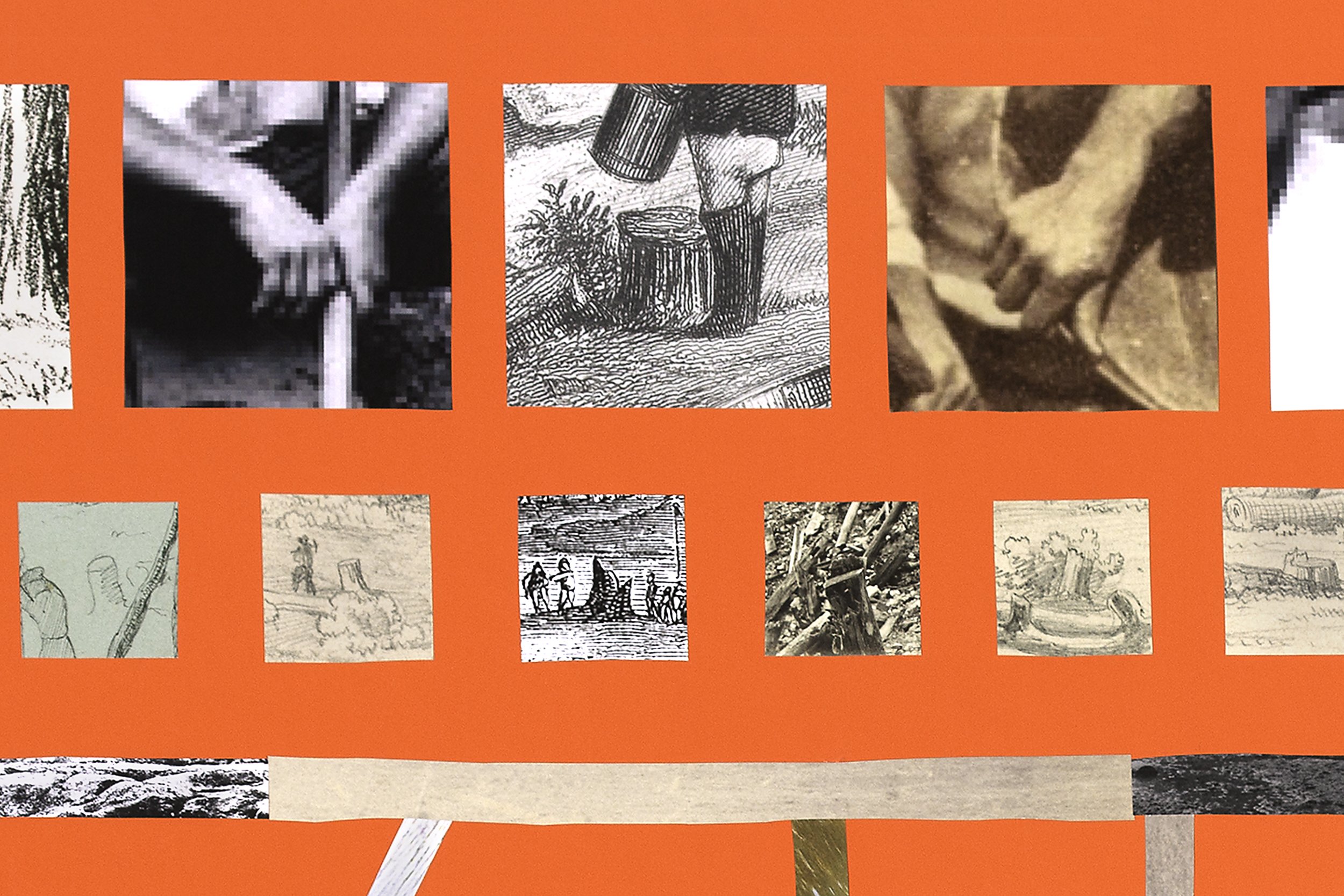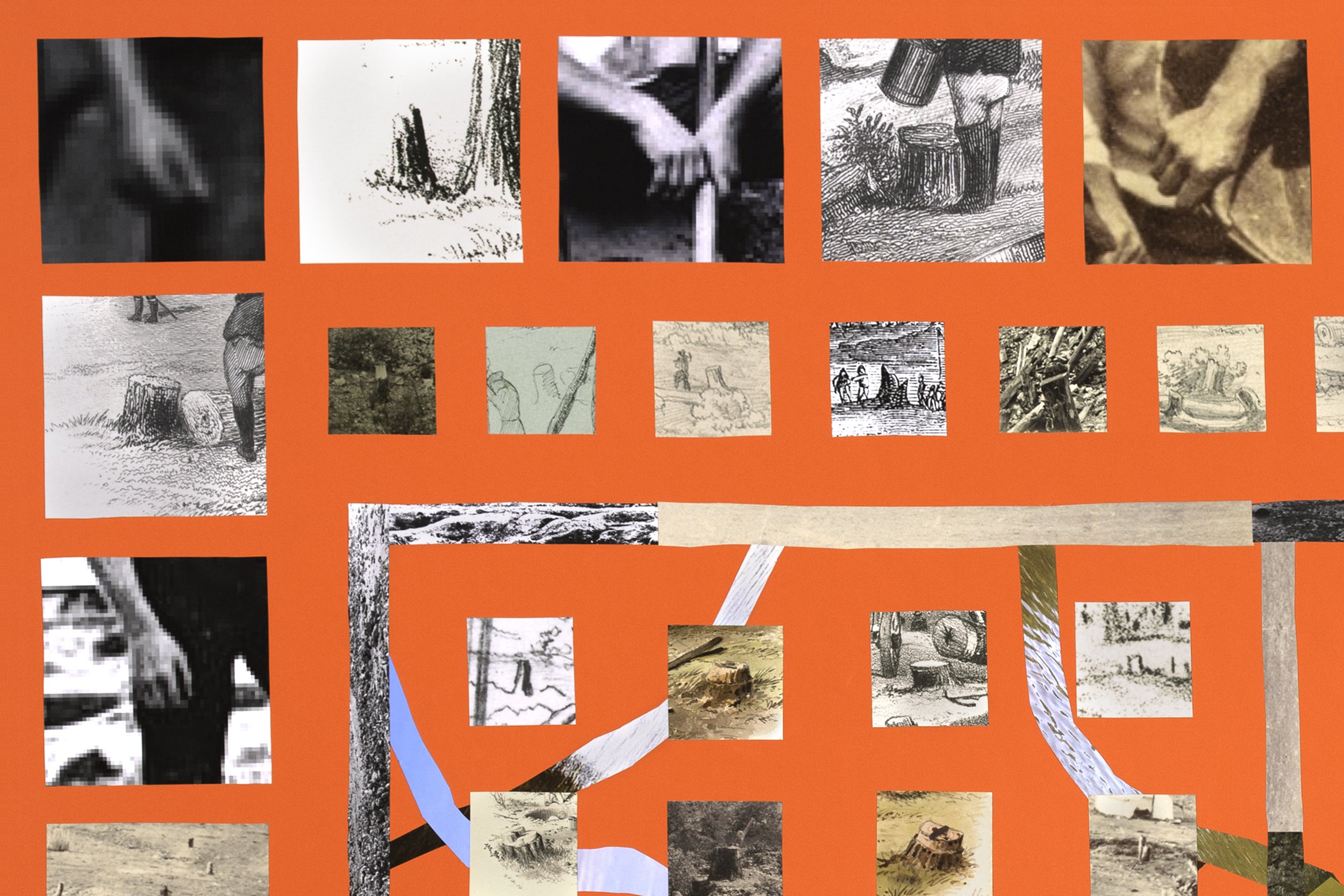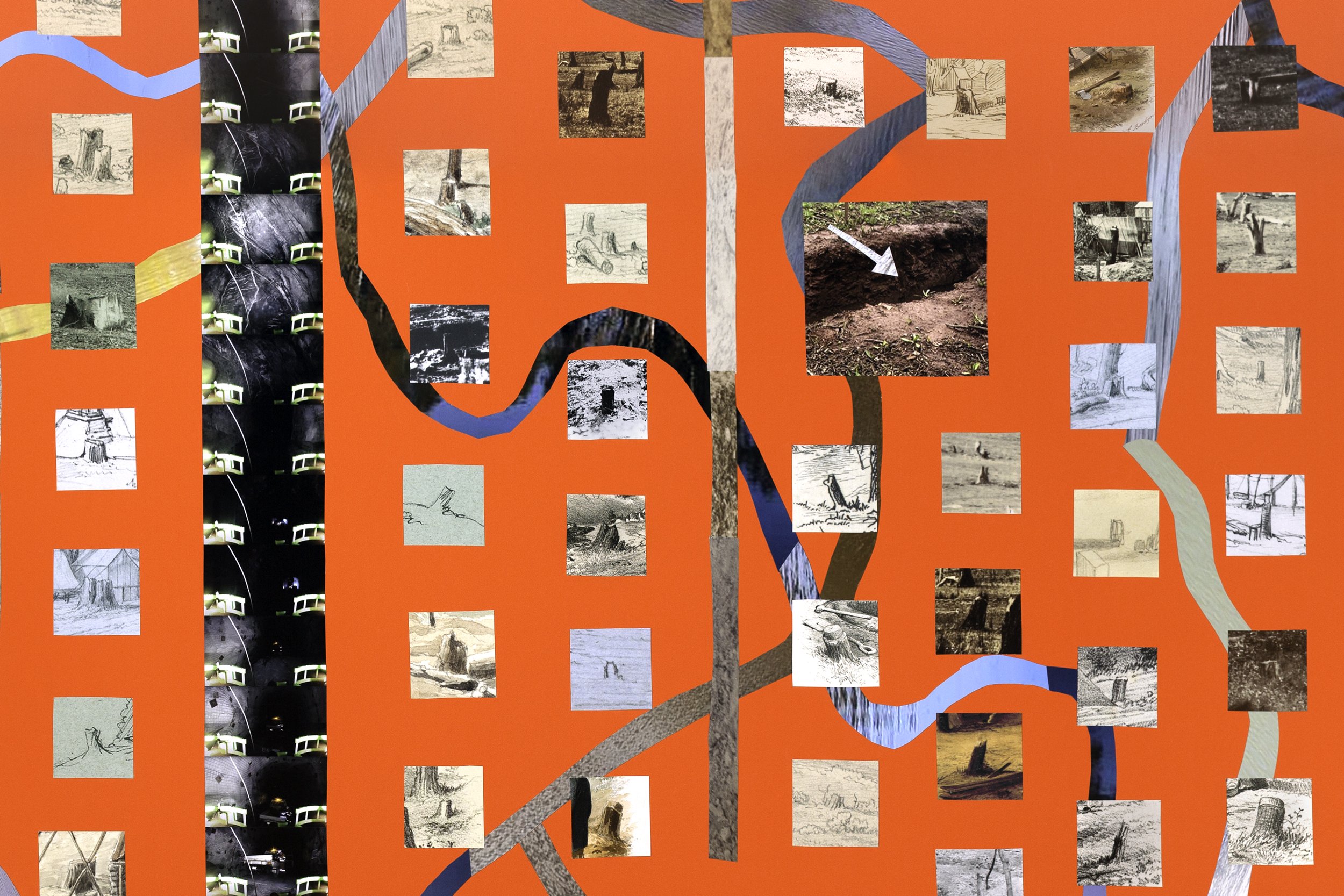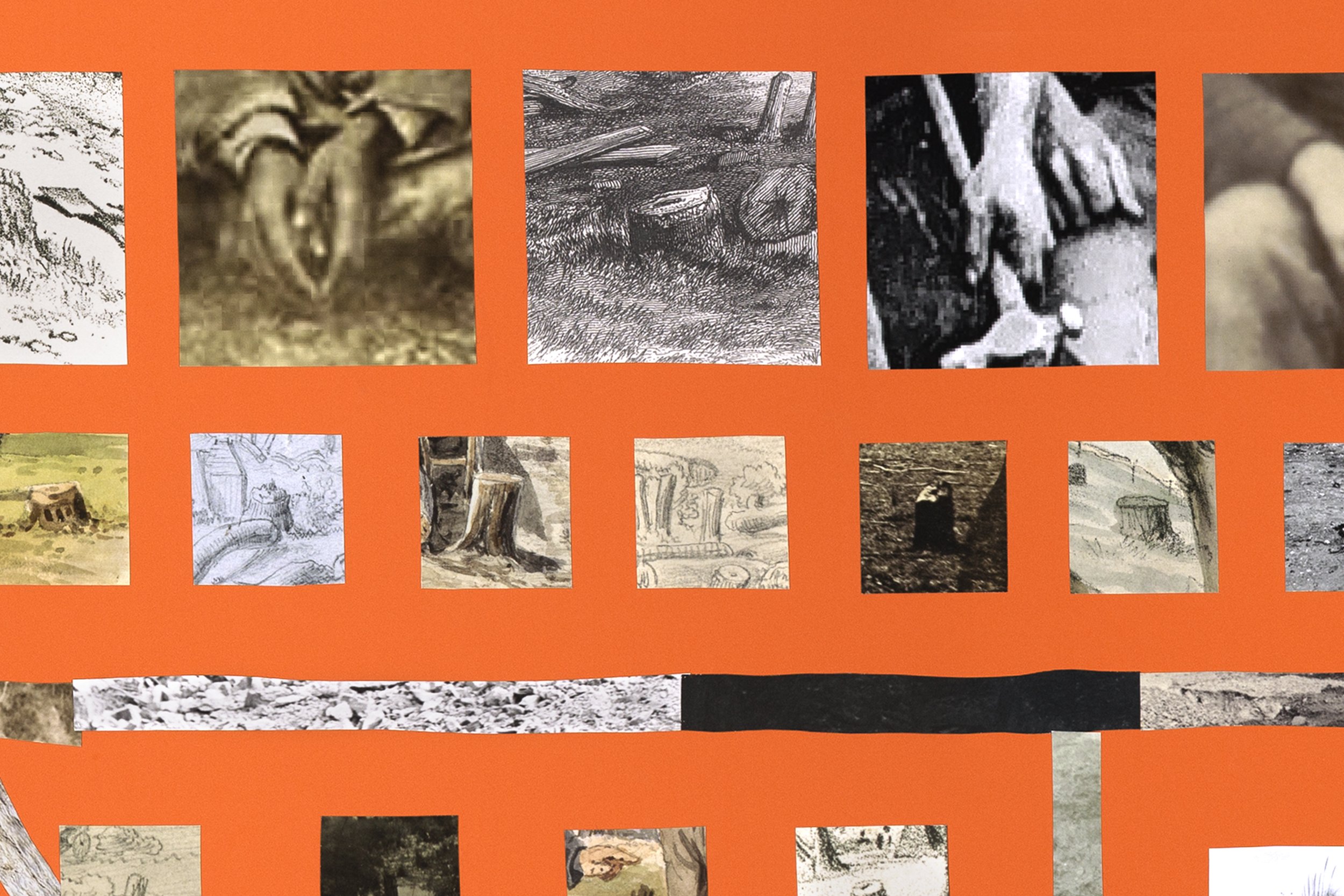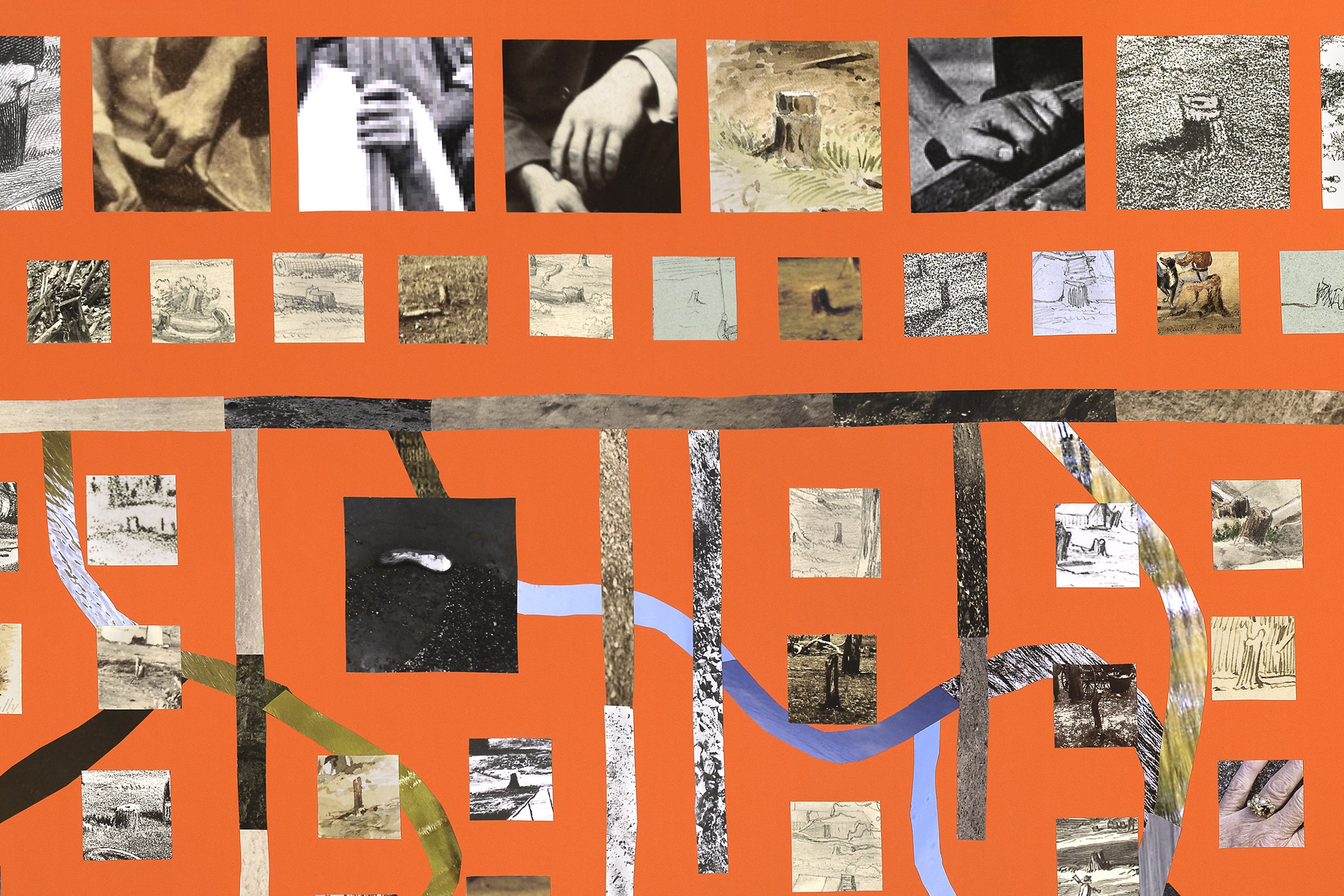Remembering Future
Vinyl Adhesive From Photographic Image of Physical Collage
Biannual Facade Commission, La Trobe Art Institute, Bendigo, Australia
March 15 - July 31, 2023
Remembering Future uses a counter-archival practice to make explicit the impact of gold extraction on the indigenous Box-Ironbark forest and woodland ecologies of Victoria.
These ecologies were stripped, turned over and polluted via extensive tree felling, soil extraction and water usage from the beginning of the gold rush in 1851, which continues today via contemporary gold mining operations. Scientists estimate that eighty-three percent of these ecosystems have been destroyed. Box-IronBark ecologies are now considered one of the most endangered habitats in Australia.
A central question asked during the making of Remembering Future was: how can we use the colonial archive to counter colonization and bring awareness to the harm it continues to deliver?
Most of the imagery used in Remembering Future was sourced from state and national archives that make public European settler-colonial artifacts—drawings, paintings, illustrations, photographs—created from 1851 through to the early 1900’s. These types of archives allow for the preservation and transfer of knowledge–and simultaneously establish a state-sanctioned memory and history.
In Remembering Future, Lyon offers a critical counter-archival representation that challenges the stories and representations told by European settler-colonial descendants. The narrative of gold in Australia is one of grit, economic prosperity, speed, progress—one of nation building. What this dominant narrative conceals is the enormous and ongoing cost to ecosystem health.
This work was informed by the collaborative research of Australian archaeologists Susan Lawrence and Peter Davies. Their book, Sludge: Disaster on Victoria's Goldfields, along with numerous research papers on mining, rivers, and colonization, served as a pivotal resource for understanding the material realities of gold and its extraction.
Image Credits: State Library of Victoria, National Library of Australia, Environment Protection Authority Victoria, Andrew F. Bennett, Jocelyn Lyon.
